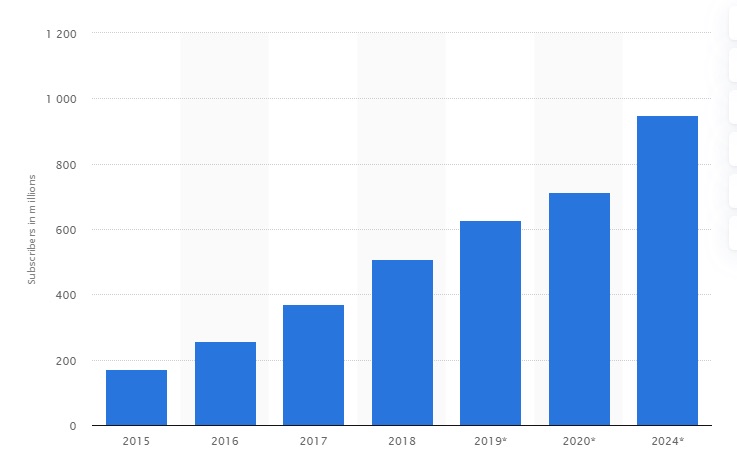Myths used to be about Gods and dragons and great quests. They taught us powerful lessons about life and the world.
But, nowadays, myths are misinformation.
They’re false beliefs that stand between us and the things we ought to do.
You know, like finally launching that SVOD business.
In this article, we’re going to slay some proverbial dragons and expose the most persistent SVOD distribution myths for what they really are.
Here are the 7 myths we’re going to debunk today:
- Nobody will subscribe to your SVOD
- You need to create endless amounts of content
- You’ll have to stop using YouTube!
- It only works with low prices
- Live streamers can’t use SVOD
- It’s a get-rich-quick scheme
- It’s too hard to build an SVOD business!
Grab your sword, your shield, and let’s get started…
Myth #1: Nobody Will Subscribe To Your SVOD
The most common myth is that nobody will subscribe to your SVOD.
This myth exists for a number of reasons:
- Self-doubt
- Fear of starting and failing
- Intimidation from the big competition (like Netflix)
But the main reason is creators don’t believe people will pay for content they could get for free.
Let’s face it, we all have that friend.
The one who uses illegal sticks and streaming sites to watch movies, TV, and sports; the one who is willing to dive into the darkest reaches of YouTube to find a video for free.
However, the majority of us are not like that.
There are an estimated 715 million SVOD users worldwide right now, a number expected to grow to nearly one billion by 2024:
That means the equivalent of the entire population of Europe is out there, right now, paying for content they could get for free. Why? Simple!
It’s because people want:
- Content they can trust
- From creators they like
- Provided in an easy-to-use dashboard
- That they can watch on demand
If nothing else they will pay hand over fist for convenience. Let me explain…
Find What Feels Good (FWFG) is an online Yoga studio.
It has nearly six million YouTube subscribers and hundreds of hours of free Yoga content. If you want to learn anything on the topic, chances are it has a free video about it.
Despite that, FWFG has over 20,000 paying subscribers to its SVOD service. Why?
Because they have created a product that makes finding, using, and enjoying their content simple and easy. They even include all of their free content on the service:
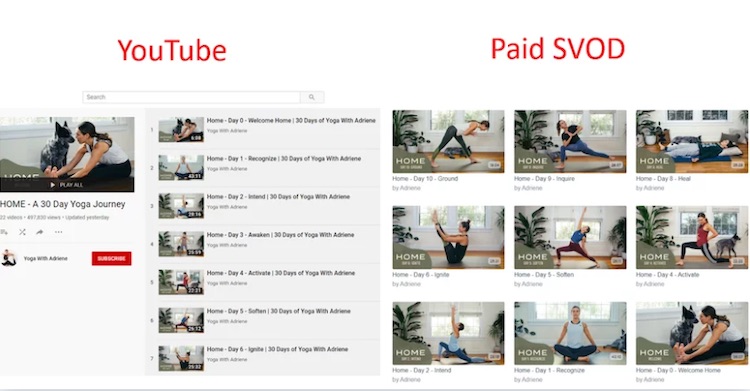
They have created a convenient product for their customers, saving them countless hours of searching through YouTube and creating their own playlists.
(The key difference here is that they do not offer all of their paid content on free channels!)
This is proof that people will pay for content they can get for free. And, you can learn about 7 other reasons they do so right here.
Myth #2: You Need To Create Endless Content
Many creators worry that the demand for content is too high. They see how much content gets uploaded to…
- Netflix
- Amazon
- Hulu
- YouTube
…then feel overwhelmed at the thought of meeting that expectation. But the truth is…
Your audience doesn’t want more content; they want less.
Content shock is a phenomenon affecting lots of people right now. It’s the feeling of overwhelm when the amount of content exceeds the capacity to consume it.
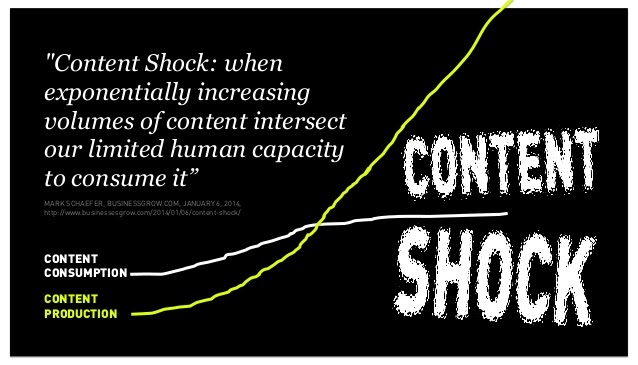
Sufferers experience high levels of:
- Stress
- Anxiety
- Indecisiveness
They are also more likely to quit their SVOD subscription because they just can’t keep up. So, by creating too much content you could actually harm your audience and business.
We find the best strategy is to create and maintain a manageable video library. One that’s big enough to feel like value for money, but small enough to be watchable.
Here’s the average length of successful video libraries in the major SVOD niches:
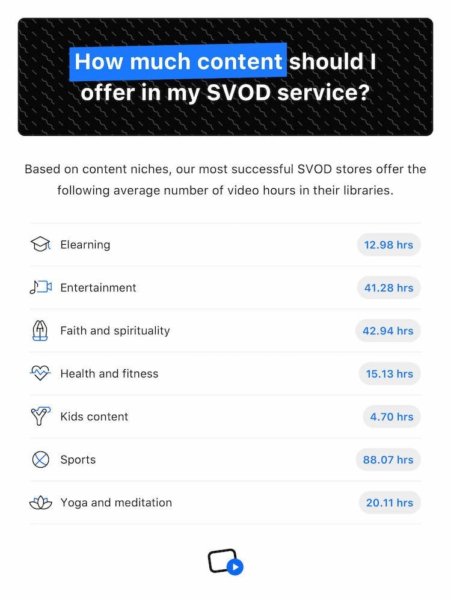
There is no research to suggest that a constant stream of new content increases retention. So, create and add content when it’s realistic for both you and your subscribers.
Myth #3: You’ll Have To Stop Using YouTube!
You might think that your SVOD and YouTube are competing against each other.
But this isn’t true.
SVODs and YouTube are two separate things.
YouTube is the world’s largest video search engine; to say it is your competition would be like saying Google or Bing are the competitors of every text-based website.
Instead, YouTube is a platform you can leverage to generate a healthy stream of traffic to your video business. You do this by creating what we call a YouTube Marketing Funnel.
For example:
Netflix has multiple YouTube channels. They are used for different genres of TV and film they want to promote. Let’s look at their comedy channel, Netflix Is A Joke.
Here they upload snippets of their premium content like:
- Stand-up comedy excerpts
- Best-of compilations
- Iconic scenes
These work to give YouTube users a taste of what they can find on their premium service. When the content is good, their audience engages with and shares the videos.
The more relevant people who see the content, the more likely they are to acquire new subscribers.
We’ve recommended this business model to SVOD owners for a long time. One where they:
- Switch to a “Search Engine” mindset
- Adopt the YouTube Sales Funnel
- Get clear on your YouTube content structure
- Optimize their existing content
- Create targeted content for new subscribers
Your Book Of Memories adopted this model in early 2019 and, in just four months, was able to earn $13,000 and convert 630 people from YouTube into paying customers.
Having an SVOD doesn’t mean leaving YouTube behind; it means leveraging it to help you grow your business.
Myth #4: It Only Works With Low Prices
My least favorite myth is, “SVODs only work with low prices”.
It’s a broad generalization that doesn’t factor in nuance, niche, and basic mathematics.
I’ll agree that subscription prices do appear low. $5 to $20 a month for video content is not a lot of money. But lower prices do not equate to low-quality products or sub-par earnings.
The truth is, you don’t need to price low; you need to price right.
You need to research to understand:
- What’s competitive in your niche
- What’s viable
- What’s right for your customer
Sometimes, this will equate to lower prices. Sometimes, it will mean higher ones.
In the entertainment niche, you may only be able to charge $5.99 a month for your service. But, in the eLearning niche, you may be able to charge $50 or more a month depending on what you’ll be teaching.
Your total earnings are a question of volume. How many customers can you attract to your service, and how many can you retain?
Often lower prices are exactly what you need to generate a healthy income. For example:
- You charge $5.99 a month
- That’s $71.88 per year, per customer
- If you have 1000 customers that’s $71,880
- If you have 10,000 that’s $718,800
- If you have 20,000 that’s $1,437,600
If you want to know more about how much your SVOD could potentially earn, we have a full guide to pricing and an industry calculator you can use right here.
Myth #5: Live Streamers Can’t Use SVOD
Live streamers feel the only place they can “make it” is on a platform like Twitch.
Look, I get it.
It’s hard to ignore the sheer size of live streaming platforms. And, if you’re going to hit the big time, you want to do it on a platform where the world is watching.
But we are already seeing a shift in the industry. Making it on third-party platforms is now just as hard as trying to break into Hollywood. Plus, thanks to advertisers:
- Revenues are up for well-established streamers
- Revenues are down for everyone else
This means live streamers will soon need to create their own standalone platforms.
One where they:
- Can generate a predictable, reliable income
- Have complete control over the content they create
- Don’t need to adhere to ever-changing advertiser guidelines
BlueStudios, a STEM education provider, is a great example of a live streaming business that uses SVOD to generate income.
They use their website to live-stream classes directly to students:
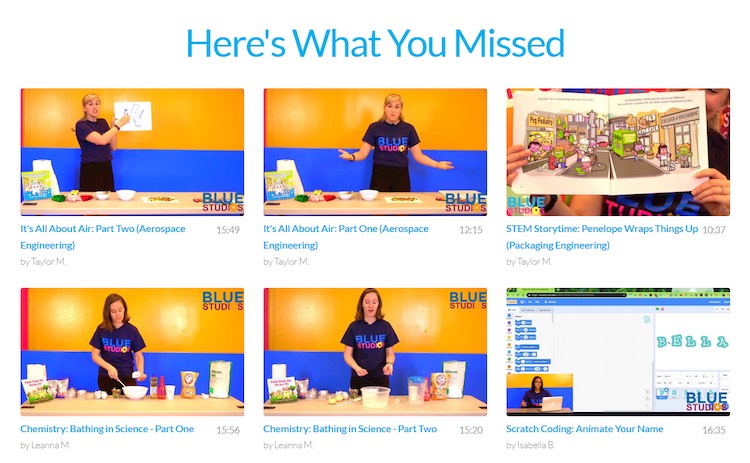
They can enroll in classes ahead of time, access class materials, and access a database of previously recorded classes to catch up on their studies.
To learn how SVOD can help your live streaming business, take a look at these free guides:
- How to create a live streaming website
- OTT live streaming: how to deliver your streams to mobile and TV
Myth #6: It’s A Get-Rich-Quick Scheme
These final two myths on this list contradict each other. (Which goes to show how untrue they really are!)
The first is that SVOD is a get-rich-quick scheme.
Folks seem to think of it as a phase where some people got lucky, or are seeing success now, but that it will all peter out soon. You know, like investing in Bitcoin.
“That’s okay for them,” I hear them cry, “but it won’t last.”
This is, of course, not true.
SVOD has already transformed the way people use video. It’s an industry unto itself. One that created cord-cutting, is dominating award shows and is empowering creators of all sizes.
The earnings in this industry are potentially lucrative, but they are not to be found at the end of a well-phrased internet-marketing pipe dream.
To succeed with an SVOD takes hard work, dedication, and a good amount of elbow grease.
That being said…
Myth #7: It’s Too Hard To Build An SVOD Business!
SVODs do require a lot of hard work. You are starting a business, after all.
However…
It’s not beyond the scope of reason. You don’t need:
- A six-figure budget
- A team of creators
- The best, most-expensive equipment
- To create “perfect” content
- A degree in marketing
Take Frances, the owner of Your Book Of Memories that I mentioned earlier. She has built her SVOD business from the ground up as a one-woman-band.
All she needed was her good ideas, a camera, basic knowledge of marketing, and a desire to share her tutorials with a relevant audience.
Has it been easy? Definitely not!
But it’s definitely achievable if you play to your strengths and invest in your own learning and development.
Wrapping This Up: 7 SVOD Myths, Thoroughly Debunked
These 7 myths have long stood in the way of you starting your SVOD. And, I hope by now you have a much better idea of how to work beyond them.
To quickly recap:
- People will subscribe to your SVOD, even when they can get content for free
- You don’t need to create endless content, a well-managed library is what your audience really wants
- You can continue to use YouTube and use it to build a healthy video business
- You don’t need to set low prices, you just need to figure out the right price
- Live streamers can definitely use SVOD to build a better business
- SVOD is not a get-rich-quick scheme. It’s an established business model that requires hard work to succeed in
- But as long as you are committed to hard work, you can realistically launch your SVOD, even with a small team or budget
How to Sell Videos Online and Make Over $5k a Month (For Real)


